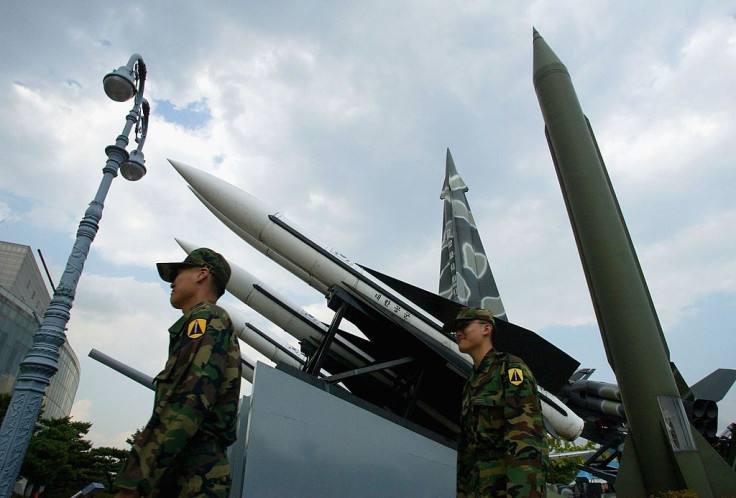What Is ICBM Capability, Range? North Korea Touts Successful Test

North Korea announced on Tuesday that the country had successfully launched an intercontinental ballistic missile, the Hwasong-14 ICBM, saying it would "fundamentally put an end to the U.S. nuclear war threat and blackmail."
The ballistic missile fired around 9:40 a.m. Tuesday recorded a flight path of about 578 miles, South Korea’s joint chiefs of staff told Reuters. The missile’s exact altitude could not immediately be confirmed but Japan’s Defense Ministry said it reached an altitude that “greatly exceeded” 2,500 kilometers (1,553 miles) during its airborne time of about 40 minutes.
Read: IRBM vs. ICBM: North Korea Claims To Have Launched Intercontinental Ballistic Missile
"North Korea fired an unidentified ballistic missile into the East Sea from the vicinity of Banghyon, North Pyongan Province, at around 9:40 a.m.," the Joint Chiefs of Staff (JCS) said. "It flew more than 930 kilometers."
The U.S. Pacific Command said in a statement it tracked the land-based, medium-range missile that landed in the Sea of Japan on July 4. Their data showing that the missile flew for 37 minutes.
Several military and ballistic experts from Washington, Japan and South Korea varied in their estimations of the Hwasong-14 ICBM’s capability.
ICBM Range: Experts Say Missile Could Reach Alaska, But Can It Reach The US Mainland?
David Wright, co-director of the Union of Concerned Scientists, writes on the group’s website that Tuesday’s missile has the trajectory potential to reach Alaska but not enough range to reach the lower 48 states or Hawaii. He notes that his calculations are based upon modifications from the Hwasong-12 missile North Korea launched on May 14. In order to hit the mainland United States or Hawaii, the ICBM would need a range of 8,000 km (4,800 miles) or more. It would also require a warhead small enough to be mounted on it and advanced enough guidance technology to ensure its stable re-entry into the atmosphere.
“Assuming a range of 950 km, then a flight time of 37 minutes would require it to reach a maximum altitude of more than 2,800 km (1700 miles),” writes Wright. “So if the reports are correct, that same missile could reach a maximum range of roughly 6,700 km (4,160 miles) on a standard trajectory.”
ICBM's are primarily designed for nuclear weapons delivery but conventional, chemical and biological weapons could also be delivered using a guided ballistic missile, write the Federation of American Scientists.
North Korea fired four surface-to-ship cruise missiles from its east coast on June 8 in the wake of a Scud-type ballistic missile launch the week earlier.
"We should be worried: Every test gets the North Koreans closer to mastering the technology for mounting a nuclear weapon on a ballistic missile powerful enough to strike the United States and its allies," Jean Lee, a global fellow at the Wilson Center, a Washington think tank, said in a statement.
"Test-firing a ballistic missile just days after the Trump-Moon summit, where the two leaders discussed tightening sanctions against North Korea, is Pyongyang's way of sending a message of defiance to the US and South Korean leaders,” Lee added.
Lee Chun-Keun, a researcher at the Science and Technology Policy Institute in Seoul said it will take time before North Korea has the capabilities to deploy multiple units of the missiles.
© Copyright IBTimes 2024. All rights reserved.




















